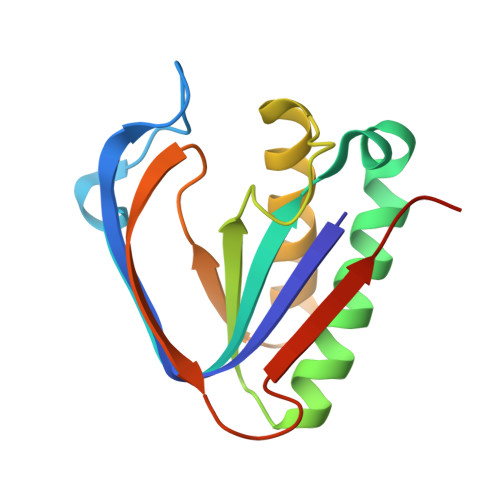Mechanistic insights into cognate substrate discrimination during proofreading in translation
Hussain, T., Kamarthapu, V., Kruparani, S.P., Deshmukh, M.V., Sankaranarayanan, R.(2010) Proc Natl Acad Sci U S A
- PubMed: 21098258
- DOI: https://doi.org/10.1073/pnas.1014299107
- Primary Citation of Related Structures:
3PD2, 3PD3, 3PD4, 3PD5 - PubMed Abstract:
Editing/proofreading by aminoacyl-tRNA synthetases is an important quality control step in the accurate translation of the genetic code that removes noncognate amino acids attached to tRNA. Defects in the process of editing result in disease conditions including neurodegeneration. While proofreading, the cognate amino acids larger by a methyl group are generally thought to be sterically rejected by the editing modules as envisaged by the "Double-Sieve Model." Strikingly using solution based direct binding studies, NMR-heteronuclear single quantum coherence (HSQC) and isothermal titration calorimetry experiments, with an editing domain of threonyl-tRNA synthetase, we show that the cognate substrate can gain access and bind to the editing pocket. High-resolution crystal structural analyses reveal that functional positioning of substrates rather than steric exclusion is the key for the mechanism of discrimination. A strategically positioned "catalytic water" molecule is excluded to avoid hydrolysis of the cognate substrate using a "RNA mediated substrate-assisted catalysis mechanism" at the editing site. The mechanistic proof of the critical role of RNA in proofreading activity is a completely unique solution to the problem of cognate-noncognate selection mechanism.
- Centre for Cellular and Molecular Biology, Council of Scientific and Industrial Research, Uppal Road, Hyderabad 500 007, India.
Organizational Affiliation:


















